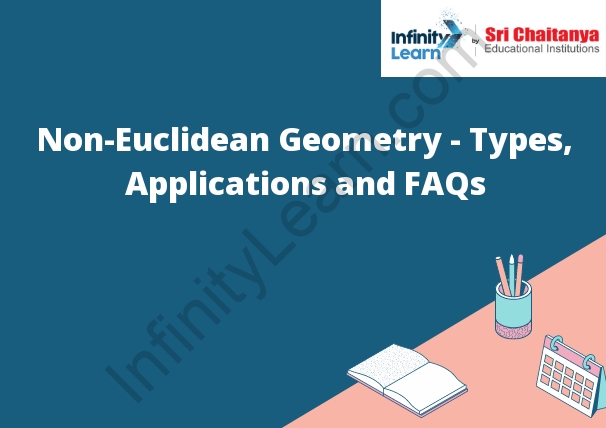Table of Contents
What is Non Euclidean Geometry?
Non-Euclidean geometry is the study of geometry without the use of the five postulates of Euclidean geometry. These postulates, which were developed by Euclid in the 3rd century BC, are a set of self-evident statements that allow for the construction of a plane geometry. Non-Euclidean geometry is any geometry that does not satisfy all of Euclid’s postulates.
There are several different types of non-Euclidean geometry, the most well-known of which is hyperbolic geometry. In hyperbolic geometry, the fifth postulate is replaced with the following statement: “A line segment can be extended indefinitely in a straight line.” This postulate leads to the conclusion that parallel lines can intersect, and that the sum of the angles in a triangle is less than 180 degrees.
There are also different types of non-Euclidean geometry that are based on different versions of the first four postulates. In elliptical geometry, for example, the fourth postulate is replaced with the following statement: “A line segment can be extended indefinitely in a straight line, but it will eventually intersect itself.”

Invention of Non Euclidean Geometry
Non-Euclidean geometry is a type of geometry that departs from the traditional Euclidean geometry. In Euclidean geometry, the basic principles are that a line is the shortest distance between two points, and that a triangle is formed by three points and the line connecting them. In non-Euclidean geometry, these principles are not always true.
There are several different types of non-Euclidean geometry, but they all share the basic premise that the traditional Euclidean principles do not always hold true. In hyperbolic geometry, for example, the shortest distance between two points is not a line, but a curve. In elliptic geometry, the triangle is not always formed by three points and the line connecting them.
Non-Euclidean geometry was first proposed by Carl Friedrich Gauss in 1829. He was attempting to find a proof for the fifth postulate of Euclidean geometry, which states that given a line and a point not on the line, there is only one line that can be drawn through the point that is parallel to the given line. Gauss was not able to find a proof for this postulate, but he did show that it was not always true. This led to the development of non-Euclidean geometry.
Spherical and Hyperbolic Geometry
In spherical geometry, all points on the surface of a sphere are considered to be the same distance from the center of the sphere. This distance is called the radius of the sphere. The angles between any two points on the surface of a sphere are measured in degrees, and are always less than 180 degrees.
In hyperbolic geometry, points on the surface of a hyperbolic plane are considered to be infinitely far from each other. The angles between any two points on the surface of a hyperbolic plane are measured in radians, and are always greater than 180 degrees.
Types of Non Euclidean Geometry
There are three types of non-Euclidean geometry: elliptical geometry, hyperbolic geometry, and parabolic geometry.
Elliptical geometry is the geometry of shapes that are like circles or ellipses. In elliptical geometry, the sum of the angles of a triangle is always less than 180 degrees.
Hyperbolic geometry is the geometry of shapes that are like hyperbolas. In hyperbolic geometry, the sum of the angles of a triangle is always greater than 180 degrees.
Parabolic geometry is the geometry of shapes that are like parabolas. In parabolic geometry, the sum of the angles of a triangle is always equal to 180 degrees.
Hyperbolic Geometry for Dummies
Hyperbolic geometry is a branch of mathematics that deals with the properties of curved surfaces that are not in the same plane. In hyperbolic geometry, the angles between lines are always less than 180 degrees. This type of geometry is often used in physics and engineering to model curved surfaces.
Elliptical Geometry
– A type of geometry that is based on the idea that points in space can be represented by two numbers, their distance from a central point, and their orientation.
Applications of Non Euclidean Geometry
Non Euclidean geometry is used in many different ways. One common use is in physics, where it is used to model curved surfaces such as those found in Einstein’s theory of general relativity. Non Euclidean geometry is also used in art, where it can be used to create new and interesting shapes. Finally, it can also be used as a teaching tool to help students understand basic concepts of geometry.





